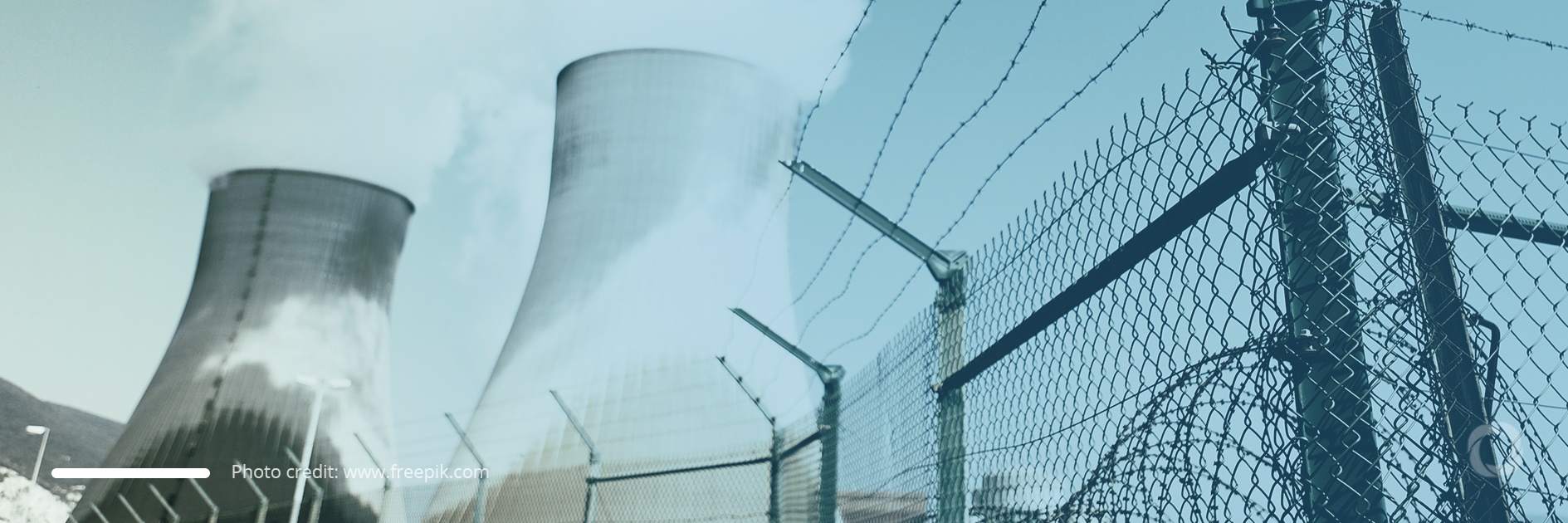Nuclear power is an important source of energy, currently meeting about 11% of global electricity needs. The United States of America, China, and France are among the leaders in generating electricity through nuclear power plants. While it is seen as a safe source of clean energy with stable power output, using nuclear technology can also cause negative environmental impacts with catastrophic intensity. This article defines nuclear energy, highlights some of the latest trends for the global electricity sector, and provides a number of pros and cons related to the use of nuclear power and the plants that produce it.
What is nuclear energy?
Nuclear energy is obtained by splitting nuclear agents, such as uranium or plutonium atoms, through nuclear chain reactions. The generated heat is combined with water to create steam that is then sent to turbines and converted into electricity.
The first operational nuclear power plant was launched in 1954 in the city of Obninsk in Russia, marking a significant milestone in the history of nuclear fission technology.
Because nuclear power facilities only need to be shut down for refueling purpose once every two years, they offer a “baseload” stream of electricity that runs continuously.
Today the United States is the leader in nuclear energy generation followed by China, France, Russia, Japan, and South Korea. Currently, 32 nations and Taiwan have roughly 440 nuclear power reactors in operation with a total capacity of approximately 390 GWe.
These facilities produced 2602 TWh in 2023, or around 9% of the power produced worldwide. Numerous nations that now have nuclear power programs either intend to construct new power reactors or are already in the process of doing so.
At present, 16 nations are building around 60 nuclear power reactors. In addition, roughly 90 power reactors boasting an overall gross capacity of around 90 GWe are planned, with an additional 300 proposed.
The number of operational nuclear power reactors globally as of May 2024, per nation.
Source: Statista
As of May 2024, the UK was home to the largest reactors under development, each with a gross power output capacity of 1,720 megawatts.
China plans to construct 150 new nuclear reactors by 2035. Of these, 27 are currently under development, with a median construction period of 7 years for each reactor. In addition, at the end of 2023, it was announced that China had managed to launch the world’s first Generation IV reactor into commercial operation at the Huaneng Shandong Shidao Bay Nuclear Power station in Shandong Province. This power plant has gained international attention for implementing technology that is able to prevent radioactive material leaks or meltdowns even in the most extreme circumstances. Generation IV reactors are also intended to use nuclear fuel more economically, safely, and ecologically.
Countries generating the most nuclear energy
Source: Nuclear Energy Institute: Top 15 Nuclear Generating Countries – by Generation.
Trends for the global electricity sector
According to the latest Global Energy Trends 2024 report, issued by Enerdata, energy use in 2023 increased more quickly compared to the 2010–2019 period, with the amount of coal and oil consumed being on the rise.
The G20 member-states were unable to cut energy intensity sufficiently to align with the 2°C climate target, nor did they succeed in breaking the link between energy use and economic development.
The report also comments that although the amount of electricity produced using solar and wind power increased, the overall share of energy derived from renewable sources did not rise significantly. Consequently, there was little to no decrease in carbon dioxide emissions.
In all, the percentage of wind and solar electricity generated in the G20 member-states power mix increased significantly (by 10% and 25%, respectively).
Shares of electricity production by source in OECD countries, 2020 (%)
Source: IEA
 Pros of nuclear energy
Pros of nuclear energy
- Less impact on global warming – nuclear reactors do not release any type of greenhouse gases during energy production thus nuclear power is not considered to be a contributory factor to global warming. Moreover, nuclear energy produces more clean-air energy than any other source
- High and stable power output – nuclear power plants present excellent fuel to power outputs ratios, where relatively small amounts of nuclear agents can provide enough electricity to power a city of about half a million people
- Low operating costs – nuclear power plants are cheaper to operate than gas, coal, or any other fossil-fueled plants. Moreover, nuclear power is not subject to significant price volatility similar to traditional fossil-fueled energy source
- A reliable source of energy – unlike other sources of energy (wind, solar) that depend on external conditions, nuclear power can be generated non-stop independent of external factors.
- Public health – according to figures provided by the World Health Organization, exposure to air pollution causes approximately seven million premature deaths annually.
Since modern nuclear power plants are more stable and scalable, they could replace fossil fuel plants and produce almost no air pollution while in operation. However, the cost and the economic return of such a transition cannot be determined at this point.
Furthermore, nuclear technology has several non-power applications that help to meet human needs. For instance:
- Nuclear medicine (nucleology) aids health professionals in diagnosing and treating diseases.
- It supports the containment of infectious disease outbreaks.
- It ensures a consistent supply of clean water through nuclear desalination.
 Cons of nuclear energy
Cons of nuclear energy
- Not a renewable source of energy – nuclear agents (e.g., uranium) used to fuel nuclear plants represent a finite resource expected to last for another 80 years
- Environmental impact – intensive mining activities and water usage leads to negative impacts on the environment. Moreover, nuclear plants generate high amounts of toxic radioactive waste that is very difficult to manage and dispose of
- Risk of nuclear accidents – nuclear power plants operate on very strict safety measures. Nonetheless, the risk of nuclear accidents that can bring catastrophic impacts for the environment and life, in general, remains possible
- High initial costs – building a nuclear plant involves very high financial costs ranging anywhere between US $30 – 85 billion and can take from five to 10 years to build
- The Berlin-based economic think tank DIW found that nuclear energy has always been unprofitable in the private economy and will remain so in the future. An analysis of the trends in nuclear power plant construction since 1951 found that the average 1,000MW nuclear power plant would incur an average economic loss of 4.8 billion euros.
DevelopmentAid is the leading provider of business intelligence and recruitment tools designed to assist those active in the development sector. Join today and gain access to exclusive information on the upcoming funding opportunities (tenders and grants) from the largest bilateral and multilateral donors.

